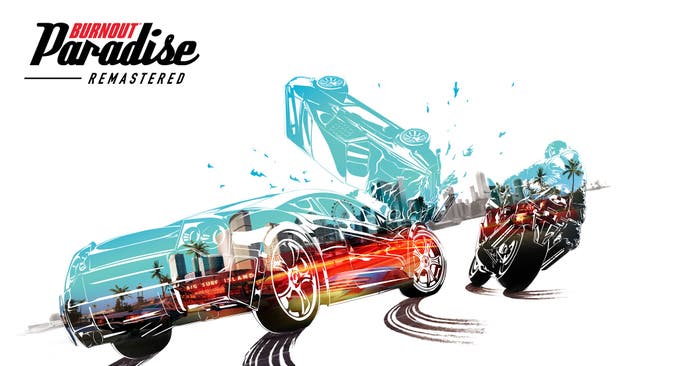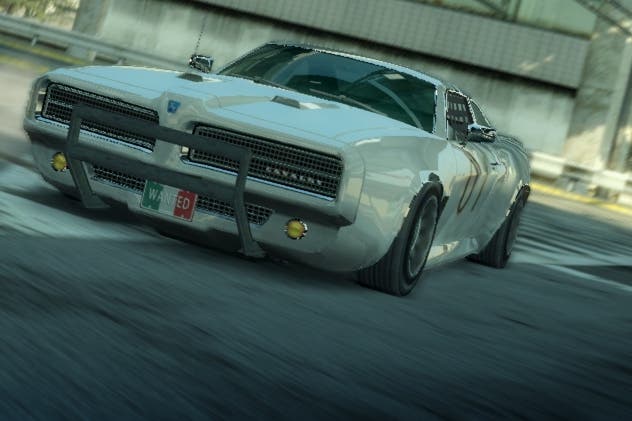Seeing Burnout through fresh eyes
A different kind of Paradise.
The first video game my son ever played - I mean really played, rather than toyed with - was Burnout Paradise. We played together, but he took control; he decided what he wanted to do and he did it. The 2008 open-world driving title from Criterion, which is being released in a remastered edition on PS4, was a formative entry in the emerging universe of free-roaming multiplayer racers, leading us to the likes of Forza Horizon and The Crew. It gave you a city and a car, and it just said 'drive'. That's exactly what my son did.
He was only four at the time, so of course, the structural formalities of most games - the rules, the obstacles, the control systems - were a frustrating mystery to him. He loved the look of LittleBigPlanet, he adored the way Sackboy moved his head around in response to the Sixaxis controller (the first time he saw that he literally laughed until he was sick - on the controller), but that game's labyrinthine menu systems and unforgiving physics meant he was all but excluded from the meat of it. Obviously most console games aren't aimed at four-year-olds, but this suddenly made me realise how game developers and experienced game players often completely overlook the essential gate-keeping weirdness of the controller, and of most design conventions. When you play games with your kids for the first time, it hits you like a thunderbolt - so much is taken for granted. So many experiences are buried beneath layers of esoteric user lore. Being a 'gamer' is like being a freemason or a scientologist except there are fewer meetings in luxury hotels and no hidden societal power.
But Burnout Paradise removes many of the abstractions we're so used to. Everything from vehicle repair to selecting and taking part in races is initiated within the game world rather than being drawn out to separate menus. You're not guided at all - you're just there. This frustrated the hell out of 'gamers' at the time, because we're used to familiar design 'on ramps' where the structure is unfolded before us, goading us in. Burnout Paradise only reveals its many events and modes as you drive, and you can totally ignore them, which my son did because he was four and didn't know what a Showtime Mode was and simply didn't care.
What he loved was exploring and testing the world. He loved crashing his way through the building site on East Crawford and breaking into the shipyards along the coastal road. He liked zooming into the multi-storey car park on Manners Avenue and parking really badly. Downtown was his favourite, with all its intricately layered avenues, subways and overpasses, but sometimes he'd drive up into the hills, bashing over street lamps in his wake, enjoying the cartoon-style thunk sound they made (he especially liked the glorious incongruity when Air on a G String came onto the game's playlist and he got to smash things with a wilting orchestral soundtrack).
He'd point at the wind turbines because we have one near our own house; he'd drive too slowly off ramps and plummet into ravines. The reward was seeing the game react to him - the way the action goes into slow-mo on a super jump, the way gates would smash open and cars would dent and deform on impact. There were no thinly veiled dopamine-baiting tidy tasks - there were no Ubisoft-style collection quests or side missions popping up all over the map like itchy chicken pox. The game tots up all the gates and billboards you burst through, but that's it as far as numbered tasks go - your attention is on the landscape, not some dumb checklist draped on top.
All of this adds to something academics call spatial presence - the feeling of really being 'in' a virtual world. The Burnout Paradise landscape locks you into its world and keeps you there by removing emphasis from the map screen, by letting you repair your car by just driving through a garage, and by creating a landscape where your car is very rarely stopped dead - there are always routes, jumps, passageways that cushion failed jumps, guiding you along a new path. Everything flows. Looking at Burnout Paradise now, the structure is somewhat old-fashioned, missing a lot of the conventions we're now used to seeing in open-world games - there are no fast travel points, no map waypoints. You drive everywhere, you develop your sense of the map. Playing with my son, I realised the value of that. He didn't to plan routes - he wanted the world to come at him.

And it was such a great world for a newcomer. As consumers of video games we tend to assess quality in terms of numerical absolutes. How large is the map? How many cars? How many polygons? But so often, this reductive approach fails to even touch on the sensual, experiential qualities of the world. The Burnout Paradise environment is relatively compact, much more so than its sprawling predecessor Test Drive Unlimited. But it is so well-constructed, like a giant toy. I wonder if there's any coincidence that another world we really loved to explore, Lego City Undercover, was also densely designed as a playground rather than a structured venue.
I wonder what modern gamers will make of Paradise and its idiosyncracies? They'll no doubt appreciate the 60fps visuals, the still-impressive crash animations, and the super jumps. But will its determined sense of presence alienate them?
That would be a shame because it really is a lovely game to play with kids. They get a sense of cause and effect, of power and consequence, without shooting or running anyone over (there are no pedestrians). They get to take the wheel and be in control, and you don't have to help or guide them. Such pleasurable moments.
We'd often play after he'd eaten his lunch. My son would climb up onto my knee, take the controller and drive away. He would drive and drive. I could smell the baby shampoo in his hair. He still had jam on his fingers.


